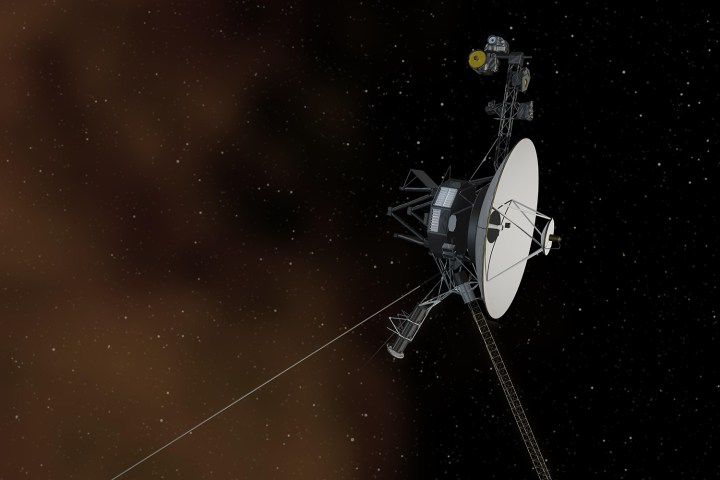
Since 2014, engineers at the Jet Propulsion Laboratory (JPL) had noticed that the craft’s regular engines, known as attitude control thrusters, were deteriorating after all this time and had become less effective.
The engineers began exploring the possibility of using the secondary engines, called trajectory control maneuver thrusters, which are located at the back on the probe. They are identical to the primary control thrusters, but the problem was that they hadn’t been used since 1980, when the spacecraft flew past Saturn.
“The Voyager flight team dug up decades-old data and examined the software that was coded in an outdated assembler language, to make sure we could safely test the thrusters,” said Chris Jones of JPL.
Voyager 1 is some 13 billion miles away, and radio signals take about 10 hours to travel between the spacecraft and the Deep Space Network here on its home planet. On November 28, the team sent out instructions to the far away spacecraft to fire up the secondary thrusters. 19 hours and 35 minutes later, they got their answer.
The secondary thrusters worked perfectly, orienting the probe just as the scientists had hoped. “The Voyager team got more excited each time with each milestone in the thruster test,” said Todd Barber of JPL. “The mood was one of relief, joy and incredulity after witnessing these well-rested thrusters pick up the baton as if no time had passed at all.”
Unfortunately, the secondary thrusters require power to provide heat to operate — a limited resource on the tiny probe. When there’s no longer enough power to supply heat, the spacecraft will switch back to its primary thrusters. Voyager Project Manager Suzanne Dodd said the new workaround would extend the life of the Voyager 1 project by two or three years.
The engineers plan to use a similar test on Voyager 2, which was launched earlier than its twin, but is still within the realm of our solar system. It’s expected to enter deep space within the next few years.
It will still be quite some time before either probe gets anywhere close to another star, however. In the year 40,272, Voyager 1 will get within two light years of a star in the Little Dipper constellation, and Voyager 2 will reach a similar distance from a star in the Andromeda constellation.


